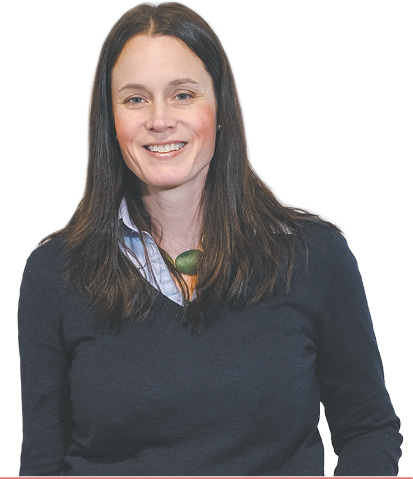Subscriber Benefit
As a subscriber you can listen to articles at work, in the car, or while you work out. Subscribe NowDesign thinking is generally described as a five-step process, with specific names for each step. But in reality, the people and companies that use design thinking adapt their own take on it, by combining or breaking out some of the steps or using a more conceptual approach.
Still, even the adapted methods have common traits: They start solving a problem by talking to the people affected by it and end with a circle of prototypes or proposals that they analyze.
Here are three examples:
 SmallBox’s approach, explained by Design Director Sarah Herbert:
SmallBox’s approach, explained by Design Director Sarah Herbert:
-
- Practicing empathy. Understand people’s experiences. We always start conversations talking about who it is we’re solving for and thinking of ideas for how we can begin to include them as co-creators in the process.
-
Collaboration. We are highly collaborative—human-centered design is highly collaborative—and create interdisciplinary teams so we’re not just working in a silo.
-
Visual thinking. Human-centered design is highly visual. It comes from the designer’s toolkit, so you’ll see a lot of approaches that ask that you create visuals because it allows you to get things out of your head and onto paper. Then people can begin responding to an image or a diagram you’ve created.
-
Lots of iteration. It can be very linear, because there are steps you want to follow. But I feel like design thinking is like “Dance Dance Revolution” (the video game where players try to hit colored arrows with their feet in time to musical and visual cues). You dabble in step one, learn and reflect. Then you realize you have to go to step three.
 Redux’s approach, explained by co-founder Reuben Zielinski:
Redux’s approach, explained by co-founder Reuben Zielinski:
-
- The first thing you have to understand is, what does the customer say? If the customer has a problem, the whole goal should be: Give the customer what they want. That starts the whole ideation. In this case, we need a dryer that dries hearing aids and similar products in less than 15 minutes.
-
Then you do the research. Is it possible? How can we accomplish this? What can we do, based on what we know, to make this happen?
-
What’s the easiest thing to implement? I like to use things we’ve done, so we don’t have to reinvent the wheel. It’s costly to reinvent the wheel. We use what we have, and we learn from the high-performing team we have. I think we can predict innovation. We know we’re going to be able to solve these problems.
-
Implement. We print the parts; we RedBoard the parts. (RedBoard is a platform for quick and easy prototyping.) I’m hand-soldering parts that we can test, prototype, assemble.
-
Get it in the field and analyze. Progress before perfection. Get it in the customer’s hands. This closes the loop. Then we solve the customer’s problem. If we did OK, now let’s perfect it, get the cost down and ramp up production.
 DORIS’ process for space planning, explained by founder Samantha Julka:
DORIS’ process for space planning, explained by founder Samantha Julka:
-
- Fuzzy situation. You can’t address a challenge until you understand what the problem is. When leaders come to us, we say they have a fuzzy situation and that they don’t fully understand all the edges of it yet. Our job is to help them frame it better—understand the situation and move forward.
-
Project orientation. We talk to all the employee stakeholders. We introduce ourselves and explain what we’re doing.
-
Fact finding. Research, surveys, interviews.
-
Challenge defining.
-
Idea generating.
-
Prototype testing. Test what they have in mind. Give them tools to build their own things. Encourage them to take their own idea and develop it further.
-
Action planning. Go back to leadership with feedback. Think about how you’re going to provide space for these people. One group likes privacy, another likes camaraderie. This is how people work and this is what they need to be successful. You need to think about designing a space that will have these things for them.
-
Ongoing engagement. With our clients, we work through the process. They’re going to need us still. They’ll have questions. We’ll continue to walk alongside you until you’re successfully with the next group that’s going to help you, or whatever we need to do to get you to the next phase.•
Please enable JavaScript to view this content.

When one doesn’t have the connections to work for an enlightened firm, it’s not unusual to be the only one with a slightly different perspective at looking at things, whether it’s design or problem solving. 8-10 years ago PowderKeg (nee Verge) was at DeveloperTown and one of the featured businesses was uCola (they pronounced it “you cola” but I believe it was because it was “microCola” just like “microbrew”. After they made their presentation, they opened for questions and there weren’t any…until I put my hand up. They’d covered just about every aspect of their product & business save one little piece of real estate. So I raised my hand and asked, “So what are you going to do with the underneath side of your bottlecap?” You see, it was bottled soda…and lots of people thought it (my question) was rather comical. My wife happened to be with me that night and we looked at each other with straight faces. What was funny was that the uCola gents were stunned and could only stare at each other. “So, um, where have you been the previous 2-3 years? *Lots* of people have looked at everything about our product and business and *no* one has asked about that before now!”
.
Bottom line: when it comes to solving problems, designing things, etc., *NEVER* be afraid to be the one who has the question no one has asked before, no one has answered before, or a possible solution, and worry about being laughed at. Me? I’m a little ol’ problem solver & designer (who maps ideas into software) who started out at 17. A late bloomer? How about June of ’79? And I’ve learned when it comes to solving problems, even before I had access to computers, when solving problems, sometimes asking the stupid question(s) no one else is willing to ask, even when everyone else laughs, can solve a *lot* of problems in very short order. The other tip is, “make things simple, not simpler.”